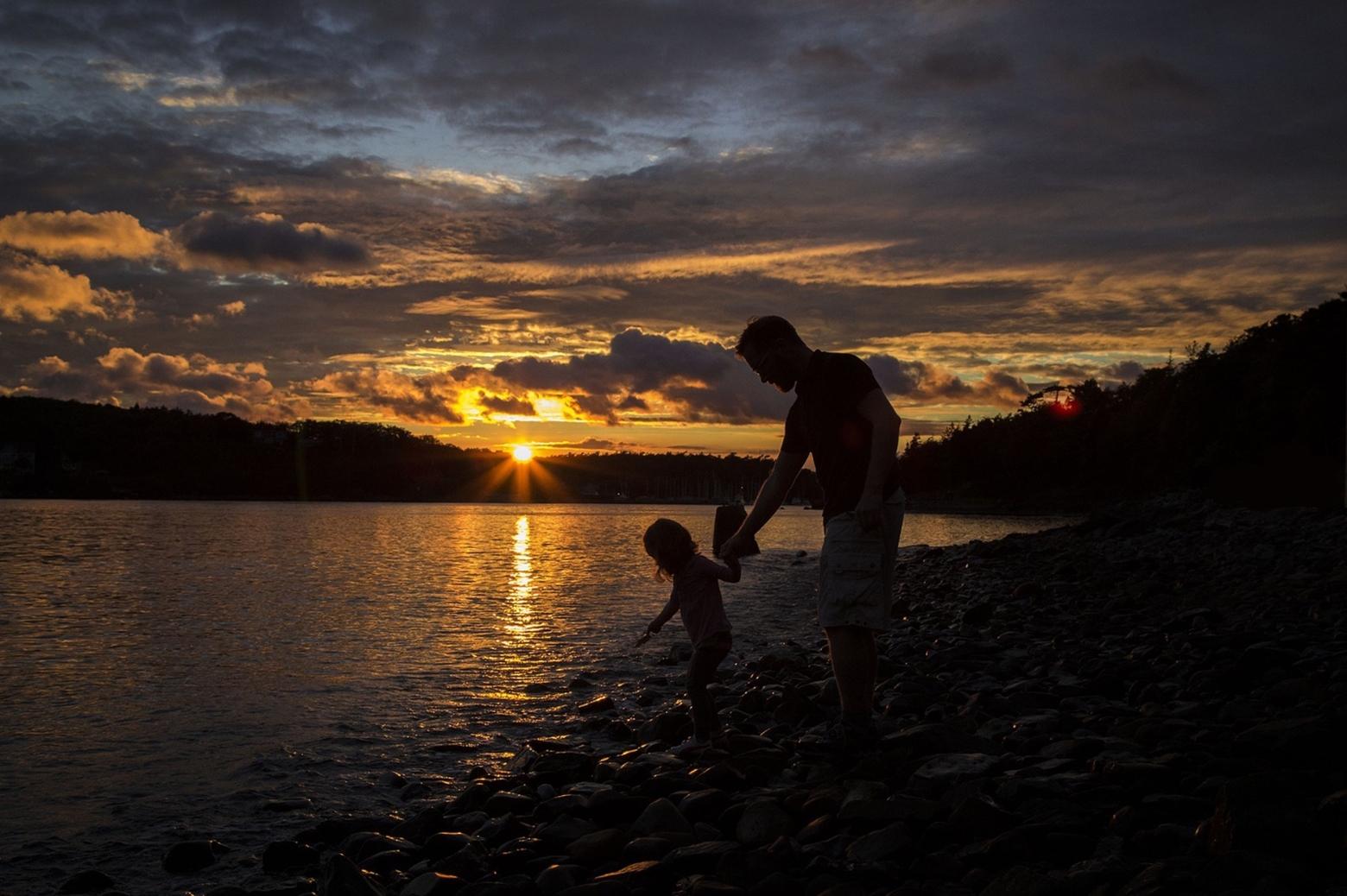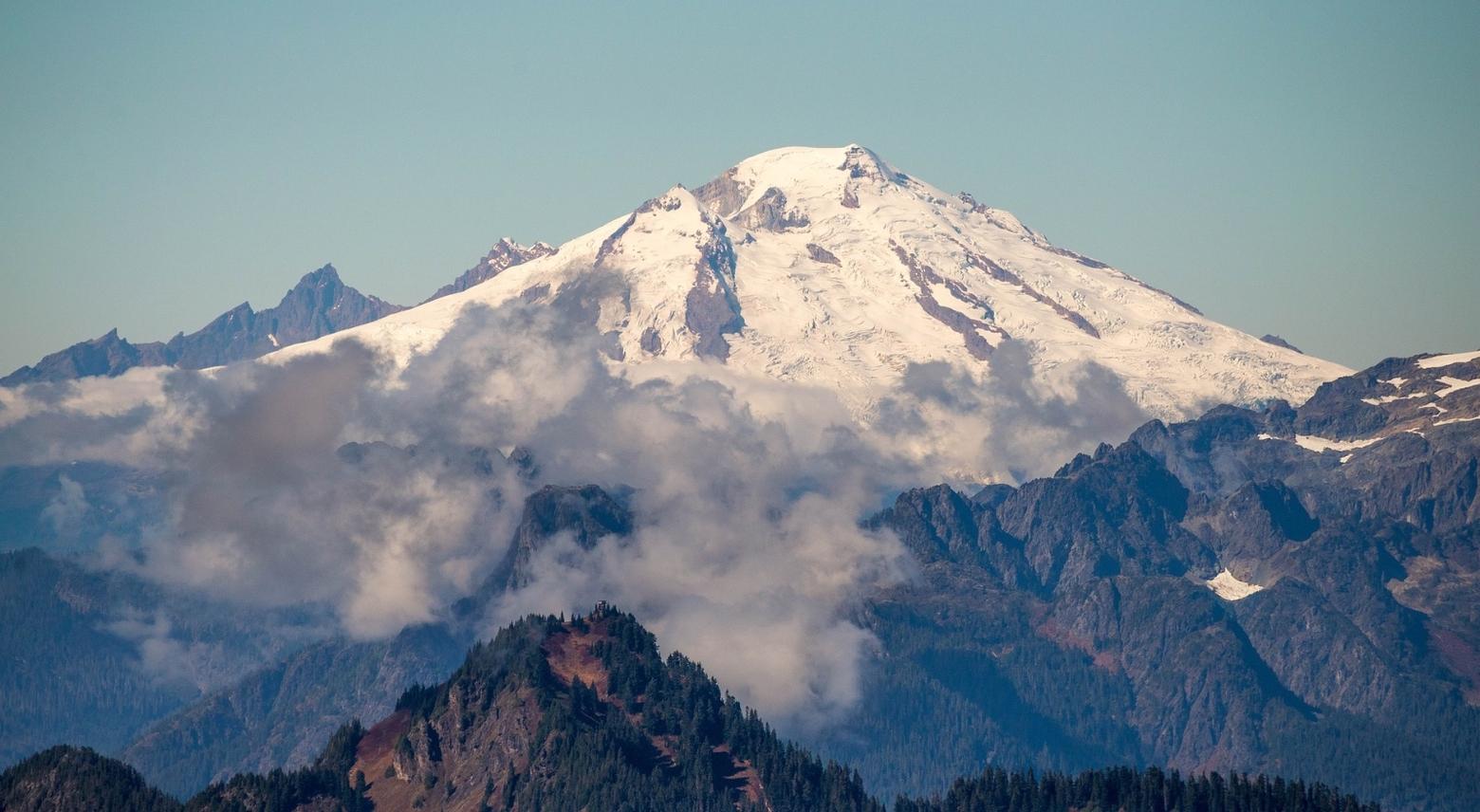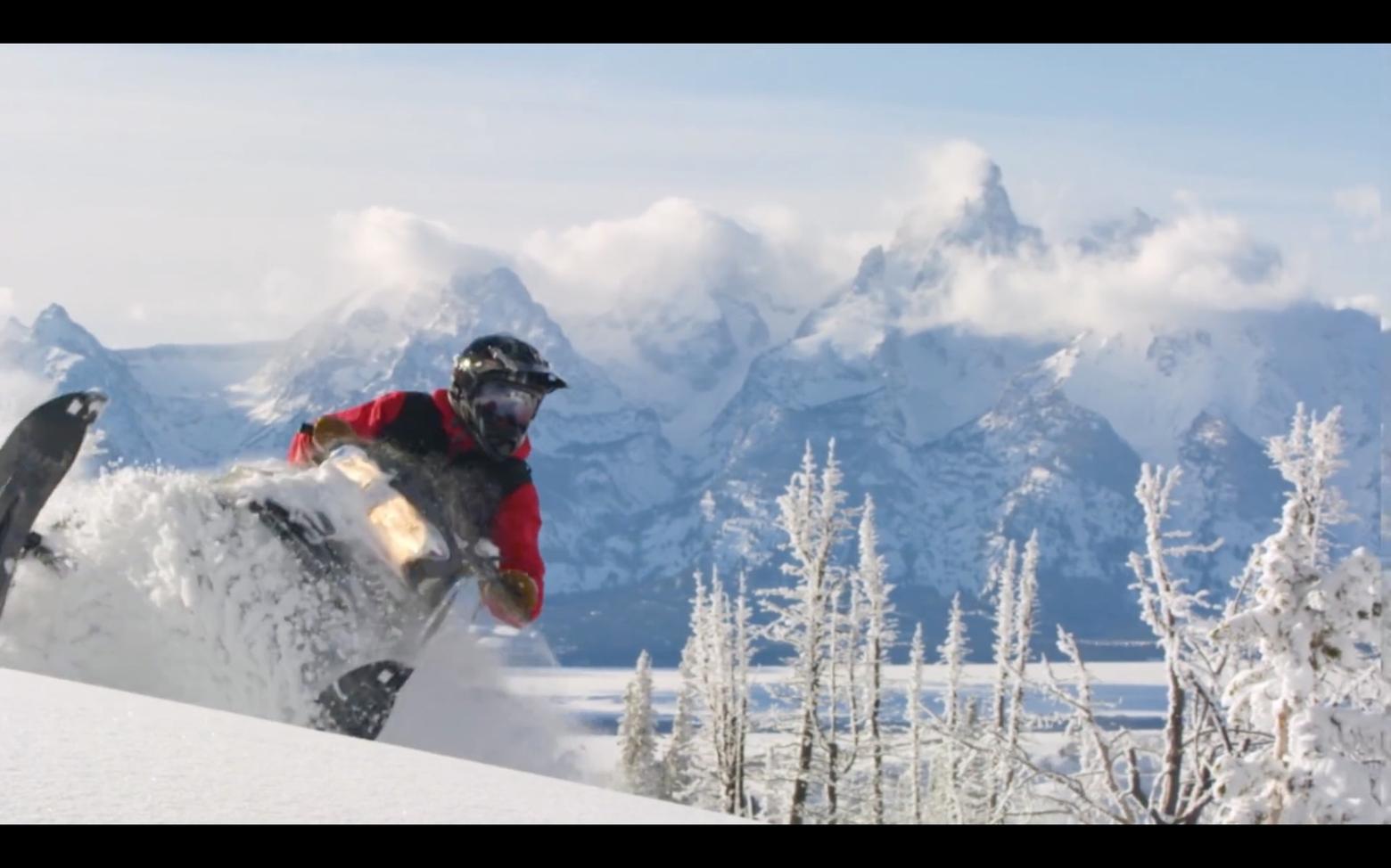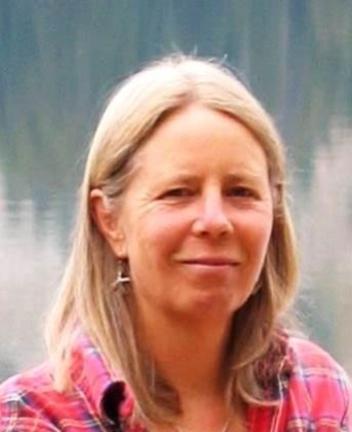Back to StoriesWhat Does It Take To Create A Conservationist?
November 6, 2017
What Does It Take To Create A Conservationist?Retired Forest Service Wilderness Manager Susan Marsh contemplates what inspires wilderness users to become wilderness protectors
People often make comments to me expressing their concern
about members of certain “peer groups” who seem interested only in their recreational
activities and hanging with friends rather than caring about the places where
they play.
“They care if there’s a log across the trail,” a curmudgeon said to
me. “But not that the trail itself is running off the wildlife.”
Will these
people eventually come to appreciate the public wildlands beyond their personal
enjoyment? It’s easy to doubt it when you encounter rude or clueless characters,
but then I try to remember: wasn’t I like that once?
As a downhill skier in
high school, I don’t remember standing around at the top of the chairlift to
ogle the snow-draped trees or Steller’s jays that flew among them like ghosts
in midnight blue. Yet, those memories stick with me. Part of my brain must have
been paying attention even if my thoughts were on skiing. Today I remember the
jays more than the ski slope, which was exactly the same each time I pushed off
the chair.
But I share
the discomfort my friends express. Are some people incapable of appreciating
this singular environment? Is it only a playground and not an ecosystem? One
long-time environmental activist, no slouch himself on marathon hikes, climbs,
and weeks spent in the backcountry, came to Jackson to work for the Greater Yellowstone Coalition about
fifteen years ago. He didn’t last long in La-la land. “I don’t get it,” he
said. “People don’t give a damn about conservation—it’s all about me, me, me.”
I thought he
and I were part of the so-called ME generation, but perhaps every group of
elders looks askance at those who follow. Age isn’t the only thing that makes a
difference in the way people respond to the wild. There is a certain
sensibility that opens you to the world, and not everyone was born with it.
But
other factors matter too, including whether you were exposed to the natural
world as a child. One thing that made me sensitive to wild places was the sense
of loss I carried since the five-acre woodlot where I played as a child was
bulldozed for housing (housing just like the little subdivision where I lived,
but the irony was beyond me at the time).
Even a nine-year old could see that
the quail and jays and other birds that visited our feeder needed somewhere to
live, and when the woods fell, they left. Whether you grieve for a lost place
or not, early exposure to a semi-natural refuge where a kid can play and learn can
make us feel as if we have an innate attachment to the wild. It’s there later,
even as we find our adolescent selves swept into the inanity of popular
culture.
"Will these people eventually come to appreciate the public wildlands beyond their personal enjoyment? It’s easy to doubt it when you encounter rude or clueless characters, but then I try to remember: wasn’t I like that once?"
Another
thing that matters is having a mentor. These people seem to hold the secret to
life and we find them steady and unflappable. They have information we want,
and a contentment that comes with expertise. And they want to share it with the
younger set. How lucky I was, when I was a teenager, to tag along with adults
who taught me about conservation and natural history. Without them, I may not
have developed an environmental conscience.
° ° °
In my early
teens I was as influenced by pop culture as anyone, but something changed a few
years later. It had to do with the times, the early 1970s, when pollution and
wilderness and saving the whales made headlines. But little has changed,
really: today’s young people have global warming, species extinction and we’re
still trying to save the whales, elephants, and gorillas. We all have our
various chances to decide if we want to work toward something beyond ourselves
or just enjoy life and play. Most of us do both.
The parties
I went to in college were hosted by profs and classmates, and we talked mainly about
geology and mountaineering. Friends would walk in and sit down and before even
saying hello, they’d launch into a tale of their most recent climbing exploit.
I was no match for the north-facers, but I was proud of myself the first time I
climbed Mt. Baker. Though I had been intimidated by steep snow and avalanches
and the impatience of my more seasoned companions, when I returned in one piece
I thought, "Wow-I did this."
A couple of
years later I went back and found myself mentoring another young woman who was
as timid as I had been. Meanwhile her boyfriend hauled a pair of skis along so
he could glide down the Coleman Glacier. In 1975, this seemed very strange
indeed. Now that glacier sometimes looks like a downhill ski area.
Maybe that
is one of the differences between then and now – we used the same old equipment
to engage in the same kind of climbing the generation before us did. It was an
adventure, not a race. We were there to be on the mountain, not to outdo each
other with the latest clothing or technology.
It didn’t
take long before I exchanged the adrenaline rush of an exposed climb for the contentment
I found in sitting on a ridge (one that didn’t make me want to pee my pants
when I looked down) and simply listen to that silence, notice the tiny buzz of
an insect in the wildflowers beside me, and watch a swift, whizzing on angled
wings as it flew over the ridge and down into the abyss.
This could have been a
result of my nature, but I give credit to those who were most important to me
as a young woman: my conservation mentors.
° ° °
My first
experience in backpacking—beyond the summer-camp night out—was led by a high
school friend’s father who was a member of the Seattle Mountaineers. He taught
me how to feel secure on a steep talus slope, how to take rest steps on a trail
that went straight up, and how to be cheerful regardless of the weather.
We
didn’t complain about small discomforts. “If your feet are cold, put on a hat,”
he advised. When we walked half a day in rain and mist, he stopped to pull out
a bag of trail mix. Passing it around, he said, “Have some GNUDS.” Gnuds?
“Goodies nibbled under desperate circumstances.”
I loved not only his good
cheer and obvious joy at being in the mountains, but also his knowledge. We
travelled an off-trail route described in a book by a pair of geologists, and
stopped often to look at the rocks. He named the peaks we could see, the
marmots we heard, and the wildflowers in soggy mountain meadows, declaring his
favorite to be American bistort, with its tuft of white flowers nodding in the
breeze.
Twenty years later I chose a drawing of bistort to illustrate the cover
of an anthology about wilderness which I edited. It only occurs to me now why
it seemed an unconscious but obvious choice. It is the flower that symbolizes
the wild because of that long-ago backpacking trip.
Later I got
involved with the northwest office of the Sierra Club which was conducting its
own counter-inventory of national forest roadless lands after the first
official inventory done by the agency. There I met people who had dedicated
their lives to conservation.
Two that stand out were a husband-wife team of
botanists who, with their Corgie, Owen, tramped along the trails and invited me
on some of their botanizing forays. I learned more wildflowers, and felt their
deep appreciation for the plants and the mountain ecosystem they depended on.
Yes, I was hiking, being in the mountains to do what I most wanted to do, but I
was also learning from these and other mentors how to approach wild country –
with reverence.
It’s
tempting to say that we old moss-backs had more of a conservation ethic than
some of the young people we see in the woods today, but I’m not sure it has
much to do with age. I know people in their thirties whose parents took them on
hiking, climbing, and paddling expeditions in Greater Yellowstone and beyond.
They were instilled with a love of the land. Regardless of your age, you either
have the religion or you don’t.
Not long
after that first backpacking trip I retired my Trapper Nelson for a more comfortable
pack, but that’s about the only thing I got rid of. The wool shirts and leather
boots I hiked in were little different from those I use today. Some of them
actually are the same shirts. Everyone else had the same gear, basic and utilitarian.
I noticed a change in the early 80s when the parties I went to in Bozeman found
people no longer bragging about climbing feats but hunched over a coffee table
with the latest Patagonia catalogue. These people were already outdoors-oriented,
and conservation was high on their list of things to care about. Why were they
such gearhead consumers all the sudden?
"Maybe that is one of the differences between then and now – we used the same old equipment to engage in the same kind of climbing the generation before us did. It was an adventure, not a race."
Towns like
Bozeman were listed in national magazines with other “best places” for outdoor
living. The in-migration of people to Greater Yellowstone to experience its
lifestyle coincided with the dot.com boom that allowed people to live wherever
they wanted and still do their work. Or else make a few million, retire, and
move to the Rockies.
° ° °
Fast-forward
three decades and the scenario that began in that time is playing itself out.
Housing is hard to find, rents are astronomical, and young people who come for
a season or two are forced by high prices to move on. Our town ski hill, now
trying to reinvent itself as a major destination resort, recently got popped
for cramming 14 employees into a tiny living space.
You don’t
engender a love of place with this kind of treatment. People get off work and
run to the closest trail to let off steam. They don’t have time to look at the
wildflowers, they have to be back at their second job in an hour. I don’t know
that it’s a lack of sensitivity or mentorship that makes some of the ‘new’
people the way they are, as much as the circumstances offered to them when they
come here looking for a life of high adventure.
Too many of them don’t take the
time to practice with avalanche beacons or ice axes, and are killed in accidents
that might not have happened had experienced mentors been there to guide them.
Advertising
adds to the problem. The Jackson Hole tourism board’s “Stay Wild” campaign is
an example of the kind of promotion we’ve seen for years, meant to ratchet up
the excitement factor with shots of extreme sports while claiming to honor the
area’s heritage of wilderness. The campaign states, “There’s something for
everyone—shopping, destination spas, award-winning dining, museums, concerts,
dance performances, and a vibrant nightlife.” No wonder people come here
looking for fun, not an appreciation of what is truly wild.
Stay Wild
posters show, among other scenes, a snow biker riding off-trail in front of the
Grand (let’s hope this was photoshopped) and a skier heading down the mountain
in a flurry of powder. This reminds me less of staying wild than engaging in
the industrial tourism Ed Abbey warned about long ago. But whether the images
display bikers, skiers, or snowshoers, the dominant photographic subject is
people.
This may be
another reason those ‘peer groups’ behave in ways that seem shallow to some of
us. While ski magazines have always promoted downhill thrills at resorts, the
same kind of imagery is being applied to activities that take place in the
backcountry. I contrast these to the pictures in books and calendars that
inspired me when I was young. People were rarely featured in the photos except
as small silhouettes in large landscapes. Those images were meant to portray
the magnificence of wilderness: a stunning granite tower, not a brightly clad
hero crawling up it. They stimulated my imagination, allowing me, the viewer,
to place myself there instead of suggesting what I should be doing.
In spite of
the advertising, people keep coming to Greater Yellowstone for the same reasons
that have always drawn them. There are more wildlife tour companies than I can
keep track of, and their clients are thrilled to see moose, bison and bears in
their natural habitat. Outfitter-guides whose long-term businesses revolved around
elk hunting are welcoming people who just want to get out and see a real
wilderness during the summer season. One guide who specializes in naturalist
hikes has to turn away business on busy days.
° ° °
In Greater
Yellowstone, we have a unique opportunity to do what many of our slogans
promise: invite people here to increase their appreciation for the wild world,
and to reconnect with themselves as its offspring. Without WIFI in many places,
people start slowing down, relaxing, and experiencing the present moment
without distractions. Not everyone is able to do this. You still see the
businessman twitching with impatience as his kids revel in a lake so clean they
can swim in it. But most visitors, some for the first time in memory, seem to
find moments of peace and serenity in simply being here.
Here the
land itself is our mentor, and it’s up to us whether to accept its invitation
or not. We should be grateful that we have this choice.






